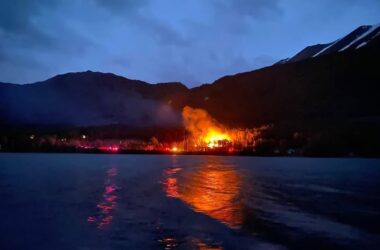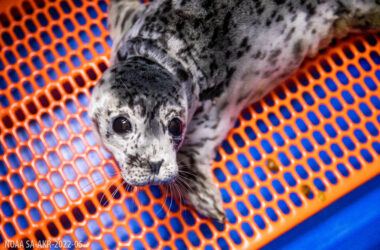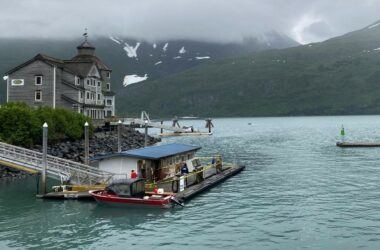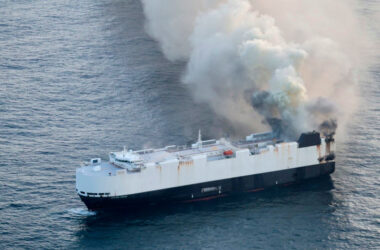The Alaska Department of Fish & Game, beginning this winter, is treating 80 acres of spruce forest land in the North Fork Road area near Homer to enhance habitat for moose and other wildlife and reduce danger of wildland fire.
In an effort to stave off a future population decline of moose, the Alaska Department of Fish & Game (ADF&G) continues to partner with the Homer Soil & Water Conservation District to treat accessible state lands within the Anchor River and Fritz Creek Critical Habitat Area (CHA).
With frozen ground to limit erosion, rutting, and soil compaction, the machines can get to work soon. A masticating head on the machine will mulch the fallen spruce trees, reducing the ‘heavy’ part of the fuel load into chips and chunks. Patches of soil will be scarified to remove the bluejoint reedgrass (Calamagrostis) and expose mineral soil so that birch and willow can regenerate; these are preferred forage plants for moose. This type of wildlife habitat enhancement speeds up forest succession so that moose can find food.
From the mulching and scarifying described above, chips from the masticated trees will reduce the reinvasion of grass. Willow and other forage species will have an opportunity to expand and sunlight will help these plants grow. Mechanized activities will be separated from the tributaries that flow into the Anchor River by a buffer of vegetation left undisturbed. Standing dead trees will generally be left on site. In some cases, the tops of dead trees may be removed to improve safety for the crews and equipment working on site. However, habitat for cavity nesting birds and wood boring insects will remain.
Spruce beetles killed many trees on the southern Kenai Peninsula, creating a landscape that is prone to fire, poor habitat for moose, and difficult for people and moose to navigate. The southern ‘third’ of the Kenai Peninsula in Game Management Unit (GMU) 15C has plenty of moose with good hunter success in recent years, but the nutritional value of forage is declining as is the quantity.
ADF&G comments on treating acreage…
Treating small acreages benefits moose but only on a limited scale. While any increase in forage opportunities helps them survive the winter, these sites can also concentrate the animals where predators could take advantage of them. A comprehensive habitat enhancement and fire safety program should include the use of prescribed fire to ‘treat’ selected acreage across the landscape over a series of years. Community support, fire breaks, smoke management, and availability of fire response resources – among many other requirements – must be aligned. State and federal agencies weigh the benefits of prescribed fire and recognize that having all of the elements coordinated to implement a prescribed burn is several years away. Until then, ADF&G continues to manage its lands in a way that serves both values of fire management and moose habitat on lands where mechanical equipment can access sites that are likely to grow forage plants.
This project is funded through a federal aid grant administered by the US Fish & Wildlife Service through the Wildlife Restoration program.






